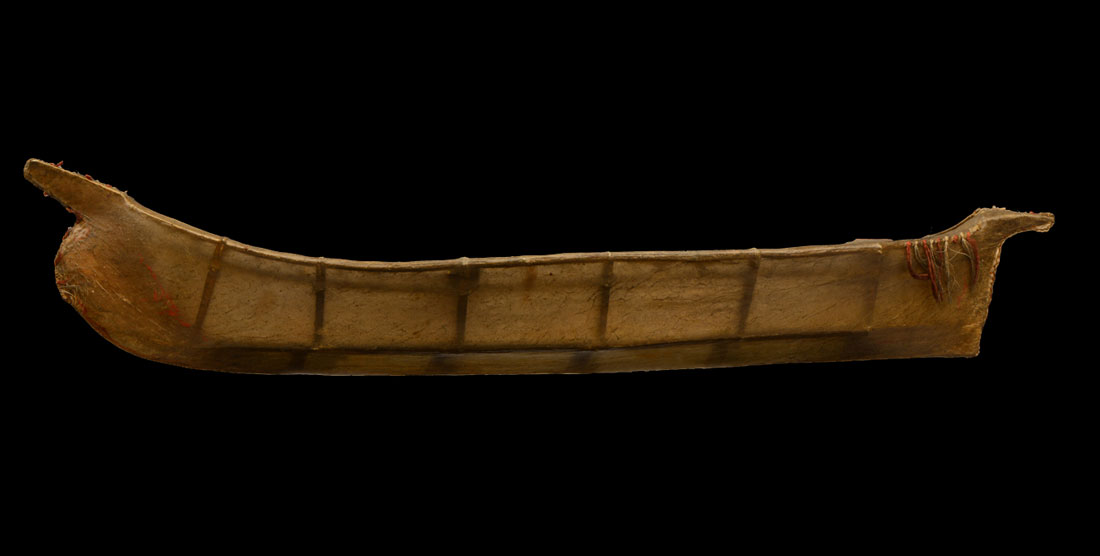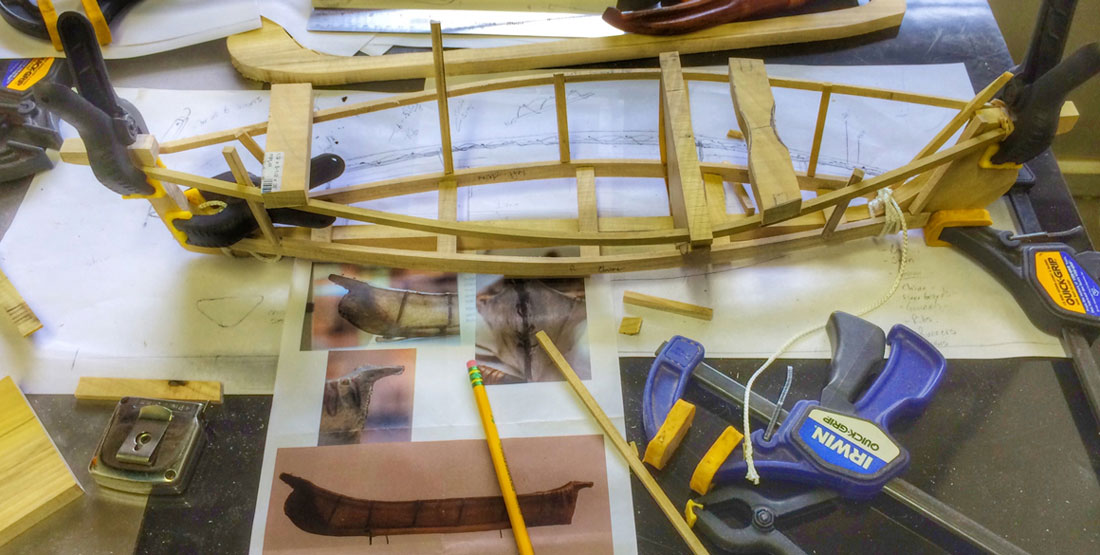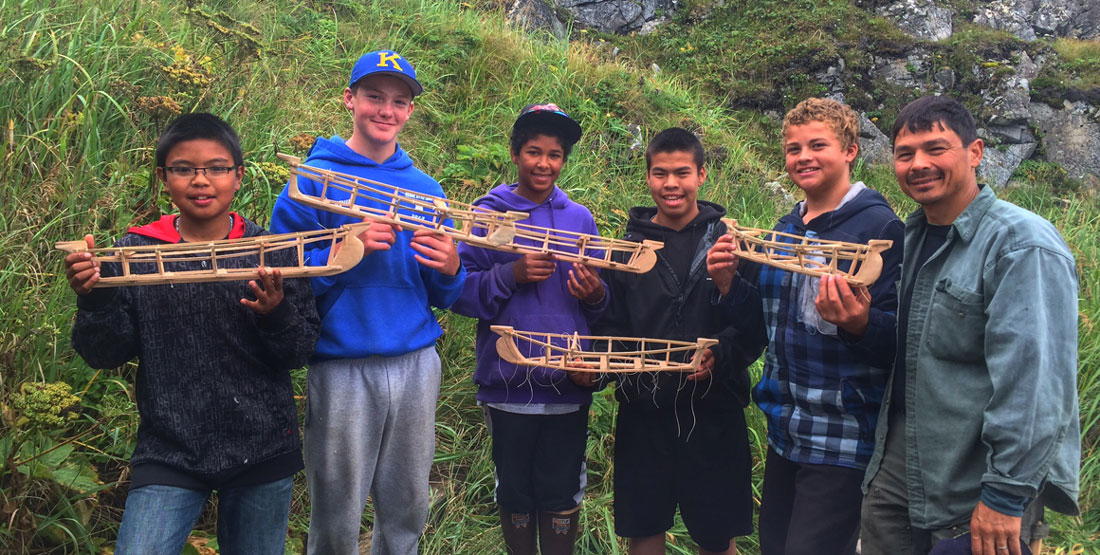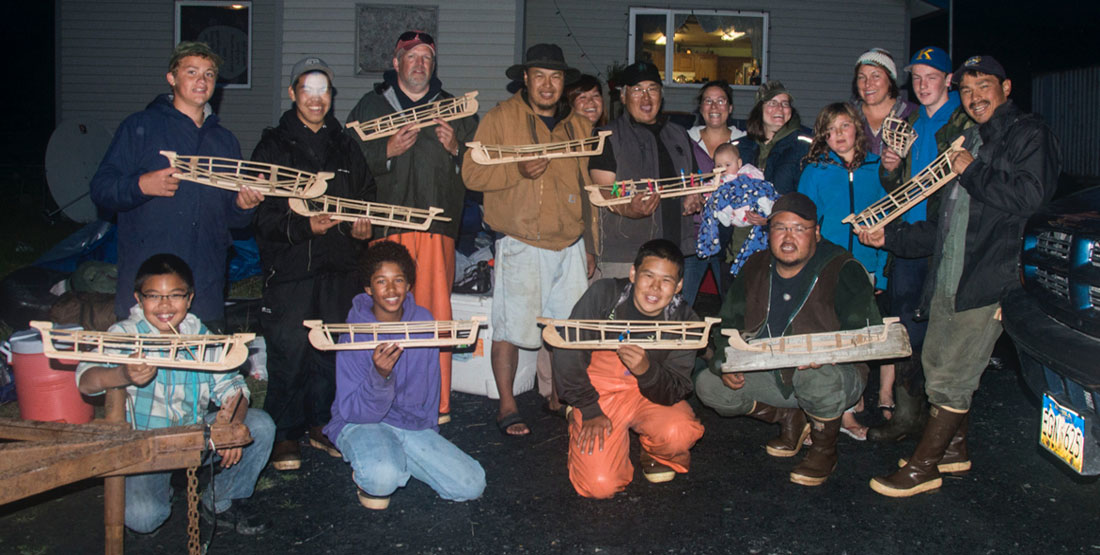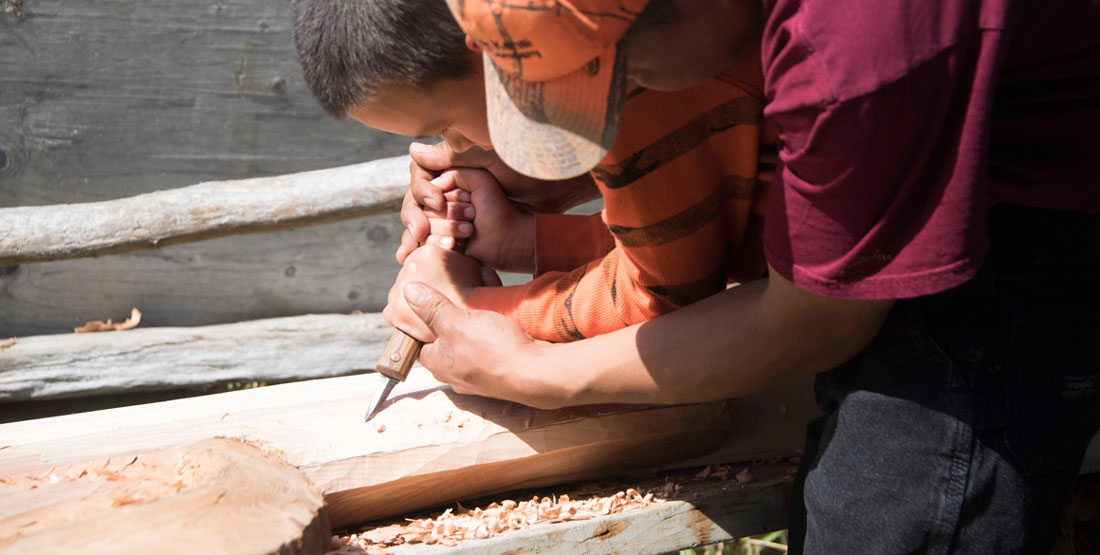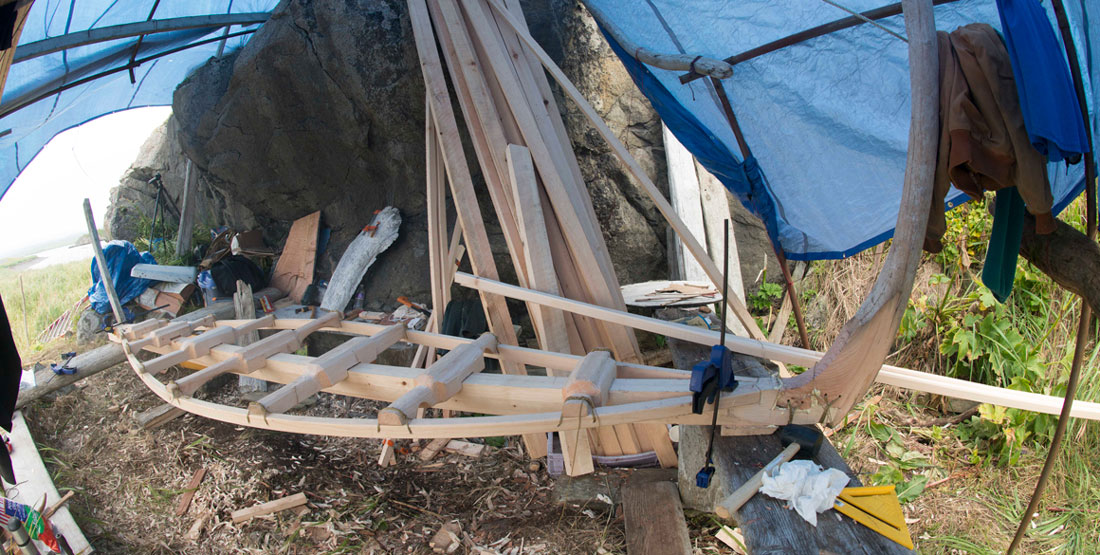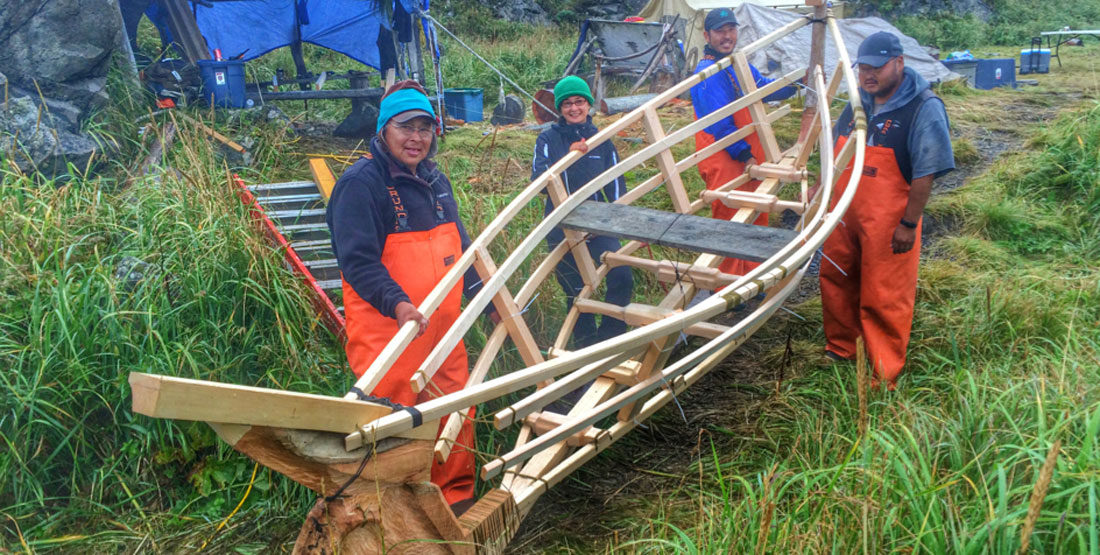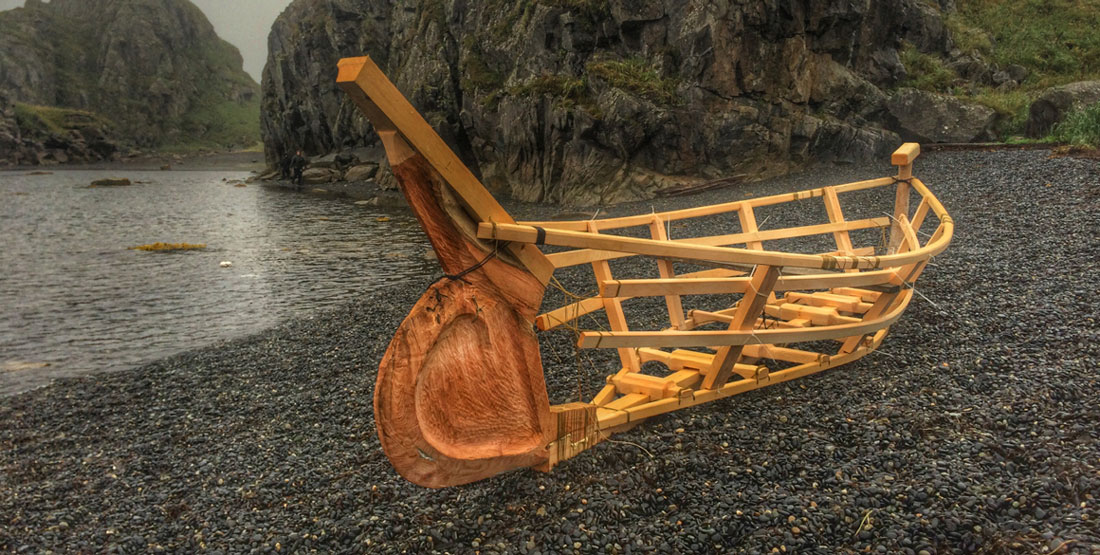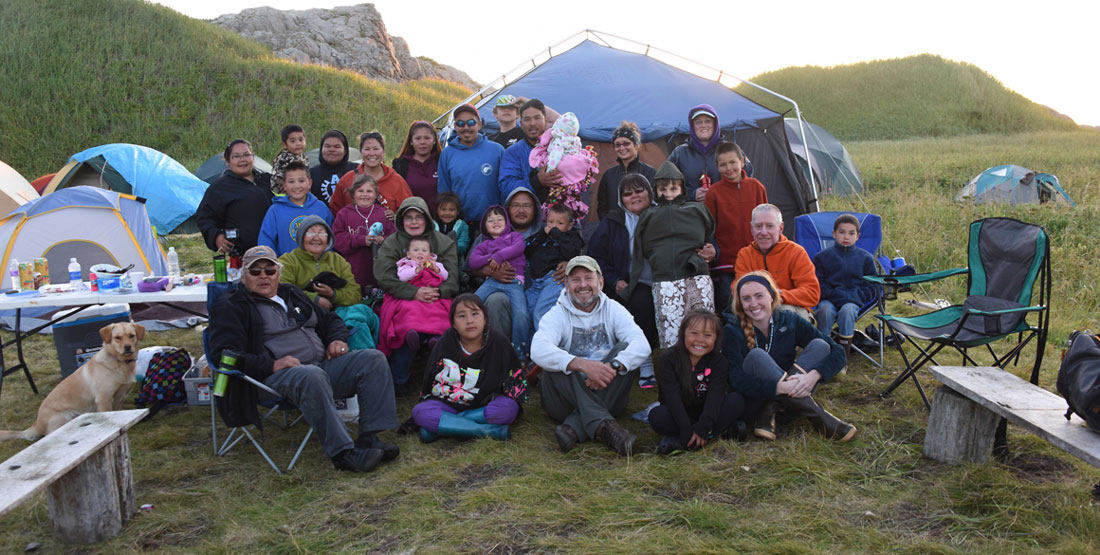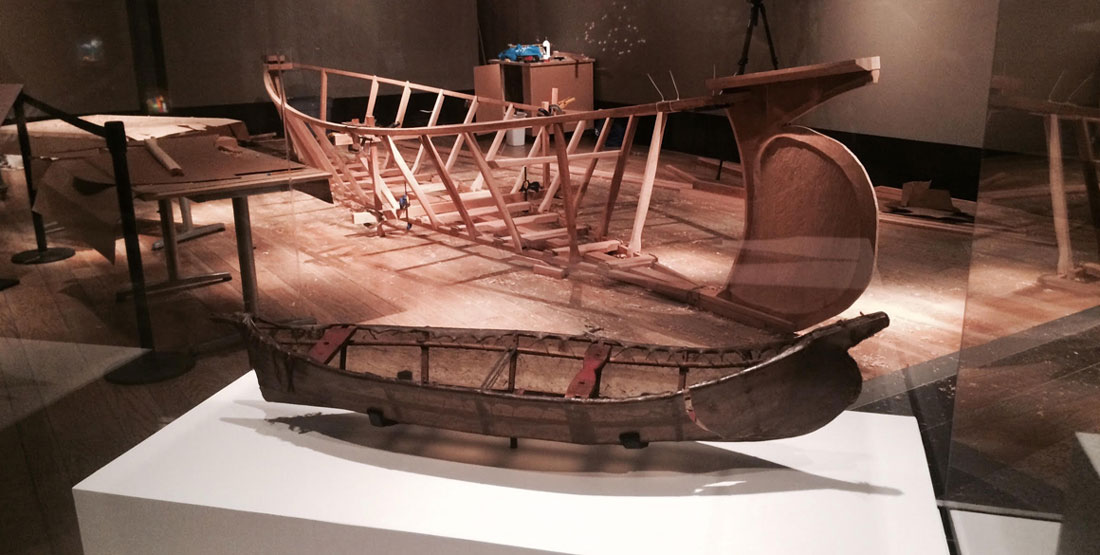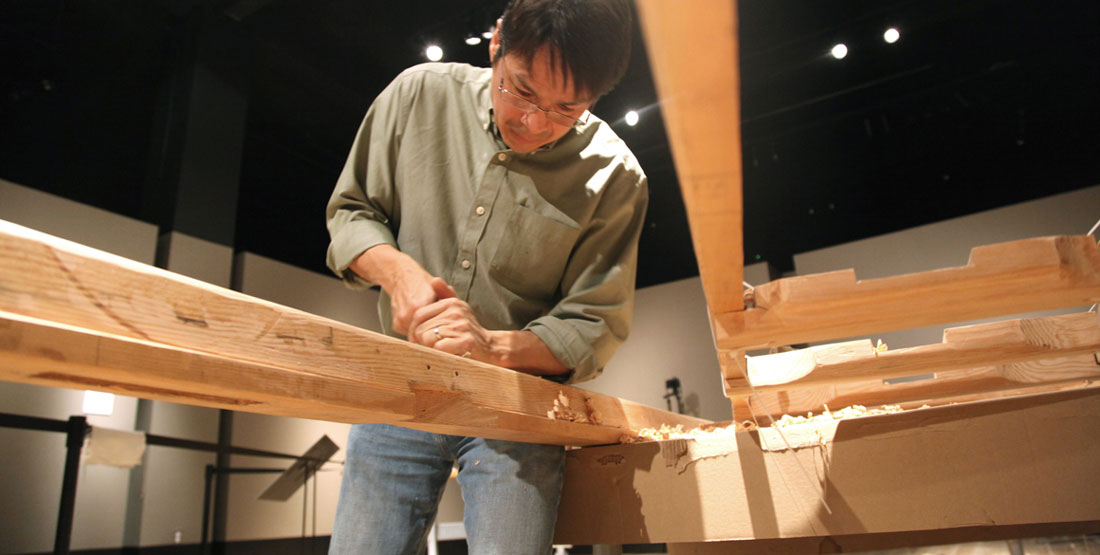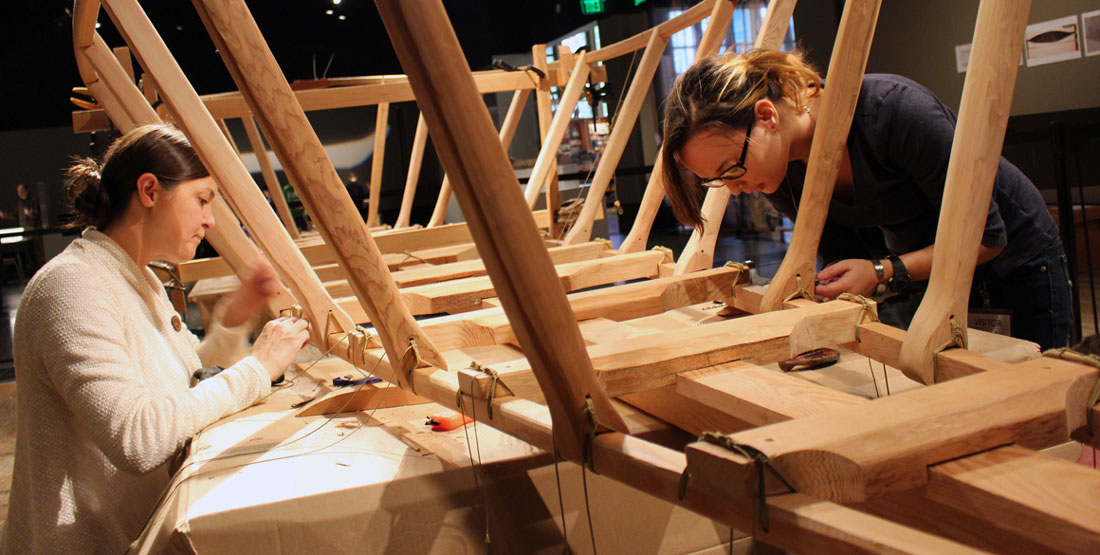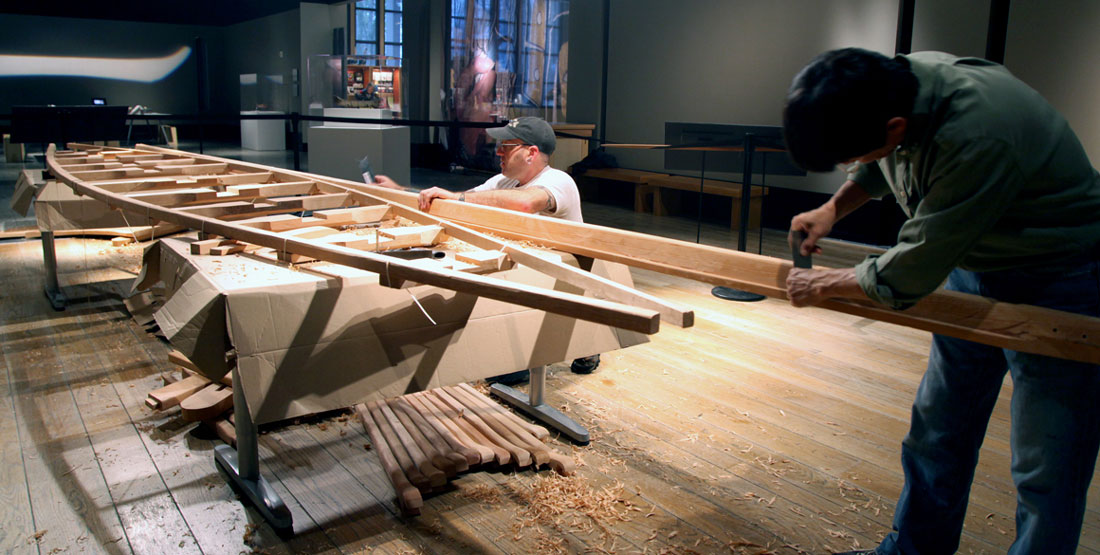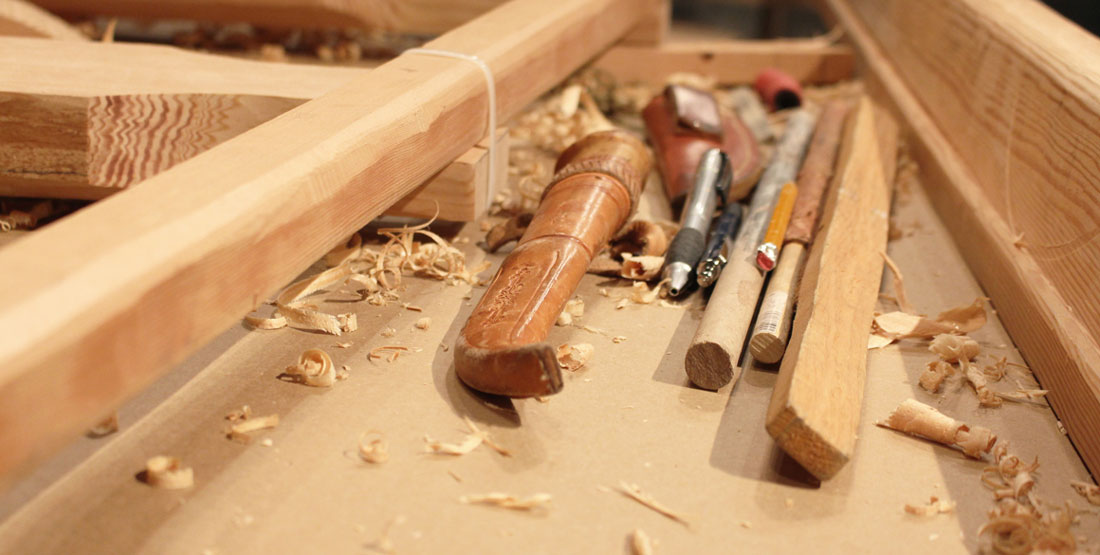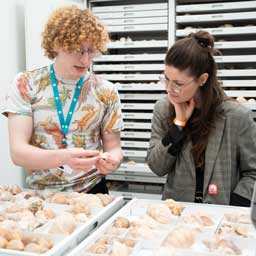“They disappeared from living knowledge,” said Sven Haakanson, Burke Museum Curator of North American Anthropology. But that’s changing. Sven, who is a member of the Alutiiq Tribe of Old Harbor, along with community members from the village of Akhiok on Kodiak Island, Alaska, are reviving Angyaaq boatmaking and restoring this knowledge to the Sugpiat people of Kodiak.
"We're trying to bring this knowledge back into a living context by learning from what we have and by working with communities," Sven said.
Learning from model Angyaaq
To begin, Sven turned to a model Angyaaq in the Burke collection—one of only 13 such models found in museum collections in the world. The model Angyaaq shows the different pieces and materials needed, while giving clues about the engineering techniques used to build a full-size version (said to be over 25 feet long). He reverse-engineered it through sketches and photos, and created a model kit to practice the techniques involved in the construction of the boat.
In summer 2014, Sven assembled 14 model kits and brought them to the Petroglyph/Kids Camp in Cape Alitak, Alaska, where the students were able to make their own model boats. This is the first time Angyaaq of any kind were built on Kodiak since the 1850s. “After nearly a century of silence, it was an honor to be able to not just show, but also teach, youth and adults how to build a traditional Angyaaq once again on Kodiak,” Sven said.
We're trying to bring this knowledge back into a living context by learning from what we have and by working with communities.
Sven Haakanson, Burke Museum Curator of Native American Anthropology
Building full-size Angyaaq
The following spring, Sven, along with a team of Burke staff and students, began cutting and preparing the cedar wood for a full-size Angyaaq on the Burke’s loading dock to learn from the process. After several weeks of work, they had a complete frame ready to assemble!
With this practice run complete, Sven traveled to the village of Akhiok on Alaska's Kodiak Island to build the frame of another Angyaaq with community members—an experience that brought the community together while restoring a lost tradition.
Almost ready for water
Meanwhile, a team of students, staff and volunteers at the Burke Museum are working on the final tying and wrapping steps to make the Seattle-area Angyaaq seaworthy. And this time visitors can watch the process unfold in the Burke gallery during the month of December 2015
To tie the boat together, Sven is teaching the team to use traditional techniques—lashing and tying—to hold together all parts of the Angyaaq without the help of nails or glue. While traditional Angyaaq lashing uses marine mammals tendons or guts, they are using synthetic rope to tie the boat and airplane fabric to wrap it.
This summer, Sven and several students will go back to Alaska’s Kodiak Island where they’ll build more boats together with the Sugpiat. Practicing this reconstruction with community members is helping to share Sugpiat heritage and traditions, restore knowledge that was previously lost, and provide a research model for others around the world to emulate.
"We're able to put this knowledge back into a living context which makes the museum even more relevant to communities," Sven said. That's what this is all about."
